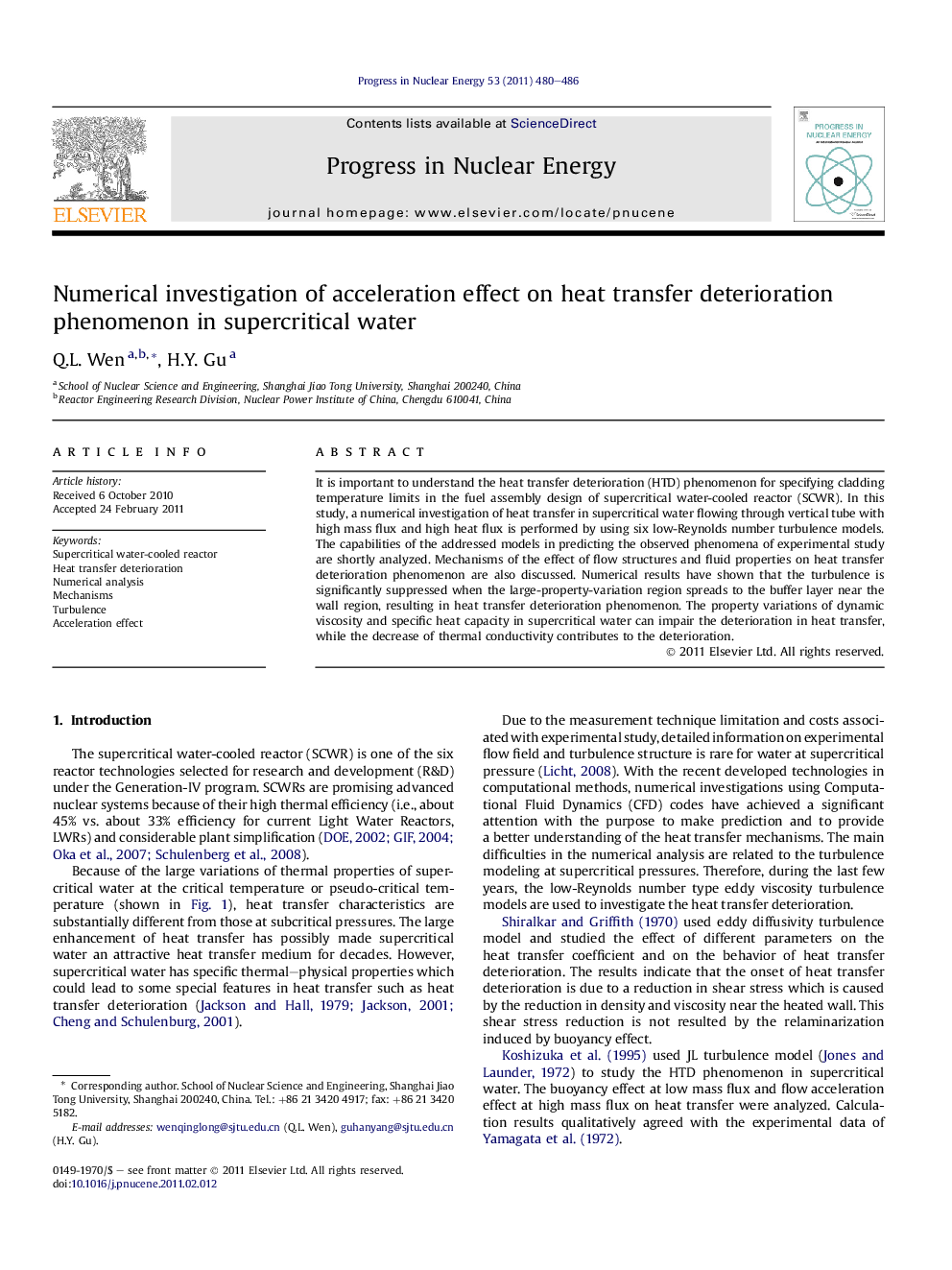| Article ID | Journal | Published Year | Pages | File Type |
|---|---|---|---|---|
| 1741295 | Progress in Nuclear Energy | 2011 | 7 Pages |
It is important to understand the heat transfer deterioration (HTD) phenomenon for specifying cladding temperature limits in the fuel assembly design of supercritical water-cooled reactor (SCWR). In this study, a numerical investigation of heat transfer in supercritical water flowing through vertical tube with high mass flux and high heat flux is performed by using six low-Reynolds number turbulence models. The capabilities of the addressed models in predicting the observed phenomena of experimental study are shortly analyzed. Mechanisms of the effect of flow structures and fluid properties on heat transfer deterioration phenomenon are also discussed. Numerical results have shown that the turbulence is significantly suppressed when the large-property-variation region spreads to the buffer layer near the wall region, resulting in heat transfer deterioration phenomenon. The property variations of dynamic viscosity and specific heat capacity in supercritical water can impair the deterioration in heat transfer, while the decrease of thermal conductivity contributes to the deterioration.
